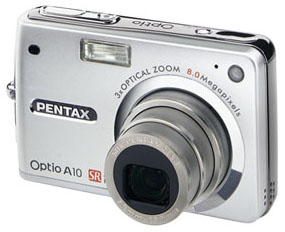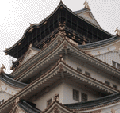 As an archaeologist, I have certainly burned up my share of film on excavations, in site surveys, and in the lab. But, all that was before the advent of digital photography. I remember well the day I donated my aluminum suitcase full lenses, filters, and camera bodies to Goodwill and never looked back as I tucked my first sleek digital camera into my shirt pocket.
As an archaeologist, I have certainly burned up my share of film on excavations, in site surveys, and in the lab. But, all that was before the advent of digital photography. I remember well the day I donated my aluminum suitcase full lenses, filters, and camera bodies to Goodwill and never looked back as I tucked my first sleek digital camera into my shirt pocket.
Things have come a long way in the world of digital cameras too in just a few short years. My latest acquisition, a Pentax Optio A10 allows me to take better pictures than I have ever taken. I may even enter some of them into a photo contest; I am that proud of them. However, I give most of the credit to the camera, not the photographer.
The Optio A10 is an 8.0 megapixel delight that snuggles in your hand and nestles comfortably in your pocket weighing only five ounces with the battery and SD storage card. It features an auto 3X zooms lens for great close-up shots and shake reduction to cure the blurries and sharpen images. The shake reduction technology uses not one, but two gyro sensors to compensate for camera movement. It also offers auto flash and red reduction.
I certainly would have looked at anyone askance a few years ago if he told me that such a small camera would also be capable of recording video with sound. The A10 uses the DivX encoder device to capture 640 x 480, 30 fps video that you can use with DVD and other portable players.
Recharge the removable Lithium-ion battery inside the camera or separately in the cradle that comes with the camera.
The 2.5-inch LCD monitor is a big improvement over my previous Optio S4i screen. While the backlight is adjustable, it unfortunately turns into a black mirror in bright sunlight. Unlike the S4i, there is no viewfinder so that you have to guess at what you are framing and crop it later.
On the top of the camera, from left to right, is the auto shake reduction button, the power on/off button, and the shutter button. To the right of the screen, on the back, from top to bottom, we find a zoom rocker switch, a view/capture toggle button, a circular control panel, a menu button, and a delete button. The circular controls include an OK action button in the center surrounded by a flash control button, an auto timer button, a mode button, and a distance/focus button. The focus button allows you to select auto focus, macro, super-macro, infinity, and manual focus.
The Mode button offers an array of choices including Auto Picture, Program, Night Scene, Movie Mode, Voice Recording, Landscape, Flower, Portrait, Candlelight, Surf & Snow, Sport, Pet, Text, Food, and a frame composer.
In the record mode, the Menu button allows you to set the pixel level, quality level, White Balance, AF Setting, AE Metering, Sensitivity, EV Compensation, Move, Shake Reduction, Digital Zoom, Instant Review time, Memory, Green button (delete) function, Sharpness adjustment, Saturation, and Contrast.
In the Set-up mode, the Menu button give you access to setting format, sound, date, world time, language, USB connection, video out, brightness level, power saving, quick zoom, quick delete, auto power off, guide display, and reset.
On the right side of the camera body is a lanyard attachment and covered charger and USB ports.
On the bottom, we find cradle charging contact points, a tripod attachment, and the battery/SD card cover.
In the box, you also get the Lite version of ACDSee, which is an excellent photo organizing and editing tool optimized for the A10.
Observations
This camera is simple to use yet powerful with a plethora of settings to satisfy those who wish to go beyond the PhD (push here dummy) stage of photography and do some postgraduate work. I found the quality of my pictures has improved almost as if my magic with this camera.
I can't tell you how much I appreciate the fact that it uses a standard SD card instead of one of those oddball other cards that are difficult to find and don't fit into anything else. Actually, I probably would not buy a camera that had a non-standard storage card. I like it when I can use the same card in my camera, phone, PDA, MP3 player, and Tablet PC. I use one of the combination SD/USB cards so that I can plug the card into any computer's USB port to view my pictures.
I do have some wishes for future editions of this camera. While Pentax has enlarged the screen significantly over previous models, it could still be larger. Also, the screen needs to be improved so that images may be viewed in bright sunlight. This is the most serious problem with this otherwise terrific camera.
My only other complaint is that my Optio S4i would fit comfortably in an Altoids can and the A10 will not. The Altoids can feature had a lot of WOW factor to it, and I miss that.
Seriously, though, the Optio A10 is a marvelous piece of work with a rich set of features that allow you to take superb quality photographs. I consider this camera to be an excellent value for less than $300 and I am pleased to recommend the Pentax Optio A10 to anyone interested in a lot of photo power in an extremely small package at an affordable price.








